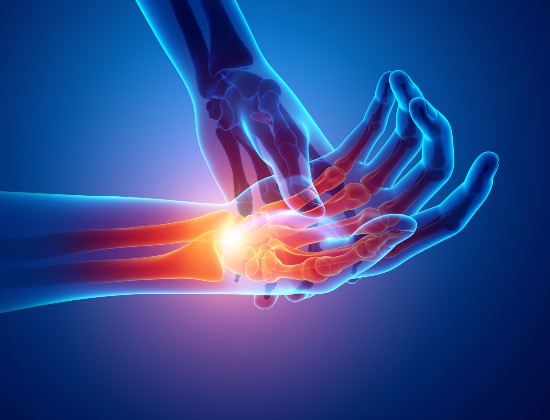Scaphoid fracture
The scaphoid bone, a small bone below the thumb, is the most likely bone in the wrist to break, particularly during sports. Having a scaphoid fracture makes it more likely that you will develop osteoarthritis later in life, particularly if it doesn’t heal well, so it’s important to get the correct treatment as soon as possible.
Causes
This type of break is usually caused by falling onto your hand when it’s outstretched, with most of your weight on the palm; this may also cause a distal radius fracture. Scaphoid fractures can affect people of any age, although they are most common in young, adult men, usually as a result of a sporting injury or motor accident.
Symptoms
Pain and swelling at the base of the thumb, especially when you move your thumb or wrist. This can also be caused by a sprain, but if the pain doesn’t improve it’s important to ask your specialist to check for a fracture.
Diagnosis
Having discussed how your wrist was injured, the specialist will usually confirm the diagnosis with X-rays to show the type of fracture and whether the bones have become displaced (moved out of alignment). You may also have an MRI scan to show the extent of damage to the bones and soft tissues around them. It’s important for the bone to heal correctly to avoid osteoarthritis of the wrist in later life.
Treatment
Treatment depends on which part of the scaphoid is fractured. For example, fractures nearer the thumb heal more quickly than those in the middle of the bone, where the blood supply is not as good.
Non-operative treatment: this means that your hand and arm will be in a cast, for around eight weeks; and you may have regular X-rays or CT scans to check how well it’s healing. You may also be given exercises to help rebuild strength and increase flexibility.
Surgery: this involves using a screw, to hold the scaphoid in place until it has healed. If the bone doesn’t heal, you may need a bone graft (new bone put around the broken pieces to help with healing); this is usually taken from bone in the same arm or, occasionally, from the hip.
Important: This information is only a guideline to help you understand your treatment and what to expect. Everyone is different and your rehabilitation may be quicker or slower than other people’s. Please contact us for advice if you’re worried about any aspect of your health or recovery.


